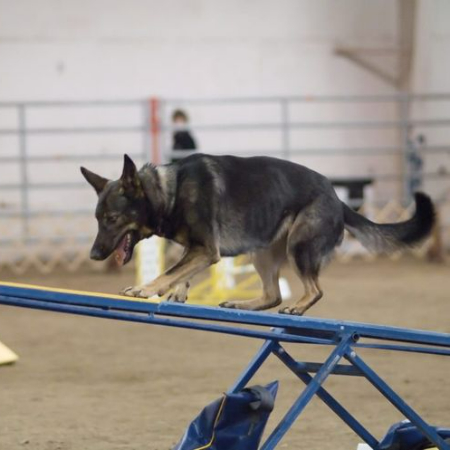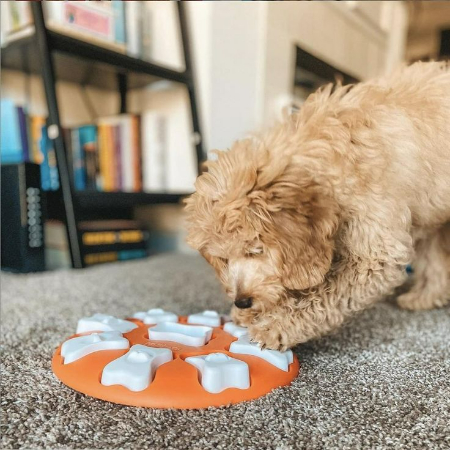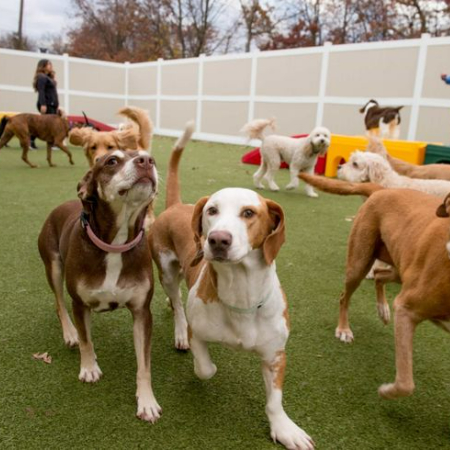Canine Fitness: Fun Ways to Keep Your Dog Active and Healthy
Your dog’s general health and longevity depend on you keeping them active and in good condition. Dogs require regular exercise to keep their muscles strong, avoid boredom, and maintain a healthy weight, just like humans do.
Making sure your dog gets enough exercise can also help boost their mental health, lessen behavioral problems, and deepen your relationship with your pet. Regardless of your dog’s age, size, or activity level, we’ll look at a variety of entertaining and interesting ways to keep them healthy and active in this post.
1. Daily Walks: The Classic Exercise
Walking your dog every day is one of the easiest, yet most effective, methods to keep them active and healthy. They not only aid in calorie burning but also offer your dog cerebral stimulation and the opportunity to explore new surroundings, all of which can be quite stimulating.

Regular walks also help to strengthen the link between you and your dog and teach proper leash manners. To get the most out of your walks, think about changing up the route so that it’s engaging for your dog and you.
While on the walk, practice obedience commands such as “sit,” “stay,” or “heel” to incorporate some training. Adding variation and increasing the cardiovascular benefits can also be achieved by changing the tempo by incorporating intervals of vigorous walking or jogging.
2. Fetch: A Time-Tested Favorite
Dogs adore fetching because it’s a high-intensity game that gives them plenty of opportunity to go about and use up extra energy. With just a safe, open area and a toy that your dog enjoys chasing, this activity is especially helpful if you don’t have a large yard.
Pick a toy that your dog enjoys playing with, such as a tennis ball or frisbee, to begin playing fetch with them. To minimize effort and continue the game, it can also be beneficial to instruct your dog to drop the toy at your feet or close by.
Try changing things up by adding training commands or throwing your throws in different directions to keep your dog interested. Your dog will be intrigued by this and make the game more exciting.
3. Agility Training: Fun for Body and Mind
Your dog will benefit much from agility training, which stimulates both his or her mind and body. Through an obstacle course that may include obstacles like tunnels, jumps, weave poles, and more, you may lead your dog through this kind of training.

For more organized practice, make your own course in your garden or join a nearby dog agility group. The benefits of agility training are numerous. Your dog’s intellect is kept sharp since it must make quick decisions and think on its feet, which is great mental stimulation.
Through the many obstacles, it also provides a full-body workout that improves your dog’s endurance, balance, and coordination. Furthermore, working through an agility course with your dog improves communication and teamwork, strengthening your relationship.
4. Swimming: Low-Impact and Refreshing
For dogs, especially those with joint problems or arthritis, swimming is a great low-impact exercise. It strengthens muscles, improves cardiovascular health, and provides a thorough full-body workout. Playing in the water is beneficial and enjoyable for many dogs.
Allow your dog to gradually become acclimated to the water before introducing them to swimming. To offer comfort, start in shallow waters and remain nearby.
To get them into the water, throw their favorite toy a short distance from the shore or pool’s edge. To protect their comfort and safety, always keep an eye on your dog when they’re swimming.
5. Interactive Toys and Puzzles: Mental Workouts
For your dog to be cognitively busy, interactive toys and puzzles are great resources. They put your dog to the test by making him work for food or toys, which can reduce destructive behavior and help him avoid boredom.

Treat-dispensing toys are among the most well-liked interactive toys; your dog must manipulate them to release treats, providing mental and physical stimulation. Another fantastic choice is puzzle boards, which train your dog to solve problems by having them move pieces to expose hidden rewards.
In addition, games of hide-and-seek, in which you conceal toys or goodies throughout your yard or house and let your dog search for them, stimulate their natural hunting instincts, and make for an enjoyable pastime.
6. Dog Sports: High-Energy Activities
Dog activities like flyball, disc dog, or dock diving are great ways to use your energetic dog’s excess energy if they enjoy running. These activities provide your dog a chance to interact socially with other dogs and their owners in addition to giving them a release for their innate inclinations.
In flyball, dogs compete in relay races over hurdles to release a tennis ball that they must collect and return to their handler once it has been released by a box. Frisbee dogs, also known as disc dogs, are canines that catch frisbees thrown by their owners and use them for tricks.
Dogs compete by sprinting down a pier and jumping into a pool, depending on how far or how high they can jump. Your active dog can benefit from participating in these activities in addition to having fun.
7. Hiking: Exploring the Great Outdoors
For dogs with high levels of energy who require frequent exercise, hiking is a great method to provide them with a more demanding exercise regimen and a change of scenery. Your dog will have the chance to experience novel scents, sights, and sounds, which can be entertaining and enlightening.

When organizing a trek, make sure to check any special leash laws and select dog-friendly trails that allow pets. To be ready, make sure you have water, a first aid kit, poop bags, and a collapsible bowl with you. Additionally, be alert for anything that can endanger your dog, such as weeds, wildlife, or uneven ground.
8. Canine Conditioning Exercises: Building Strength and Flexibility
Canine fitness exercises that improve strength, flexibility, and balance are beneficial to them, just as they are to humans. These workouts are especially good for preventing injuries, which is crucial for dogs that are older or active.
For instance, the sit-to-stand exercise strengthens your dog’s hind legs and core by having them sit and then stand regularly. Another fantastic alternative is cavaletti poles, which help your dog’s balance and coordination by arranging a set of low poles for them to step over.
Further strengthening and developing awareness in your dog’s hind legs is training rear-end awareness, which involves having them twist their back end while placing their front feet on an elevated platform. By doing these conditioning activities, you can lower your dog’s chance of injury and maintain general health.
9. Social Playdates: Fun with Friends
Your dog can improve their social skills and get rid of excess energy by having playdates with other dogs. Compared to playing with people alone, interacting with other dogs can be more entertaining and provide more exercise.

In order to guarantee a positive playdate, it’s critical to select dogs whose sizes, energies, and play styles complement one another. It helps deter territorial behavior and fosters a more laid-back atmosphere to meet in a neutral place, like a dog park.
Watch out for any symptoms of discomfort or aggression and always supervise the play to maintain safe and amicable interactions.
10. Training Sessions: Mental and Physical Exercise
Your dog will benefit much from the cerebral workout that training sessions provide in addition to teaching commands. It can be equally as taxing on your dog’s brain to learn new instructions or tricks as it is to exercise physically.
The first step in running a successful training session is to reinforce fundamental commands like “sit,” “stay,” “come,” and “leave it.” To keep things interesting and lively, you may even incorporate more complex maneuvers like “roll over,” “play dead,” or “shake”.
Adding scent work to your dog’s training may be an exciting and fulfilling challenge. Simply hide treats or items and train your dog to find them using their nose.
Conclusion
Beyond physical exercise, mental stimulation, social connection, and a range of activities that satisfy your dog’s natural instincts are all important components of keeping your dog active and healthy. There are numerous methods to make sure your dog gets the exercise they require to live a happy, healthy life, including regular walks, interactive games, and organized sports.
You’re preparing your pet for a lifetime of health and happiness by including these enjoyable activities into your routine—after all, a tired dog is a happy dog.
Always get advice from your veterinarian before beginning a new fitness program, particularly if your dog already has health issues. Together, you and your dog can lead an enjoyable and active life with the correct combination of activities!
Doglime for more dog-related information.










